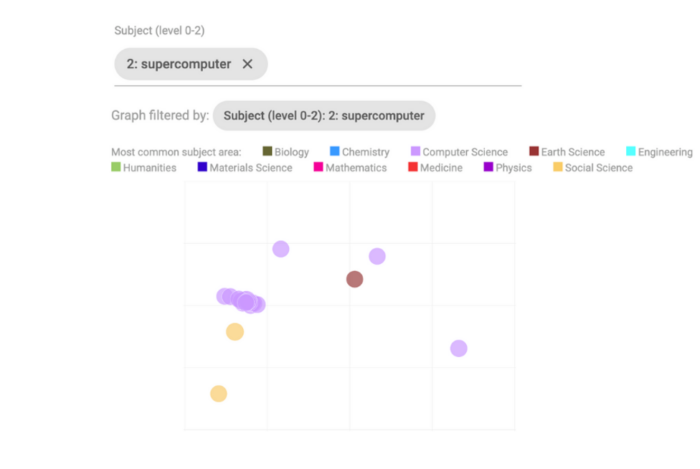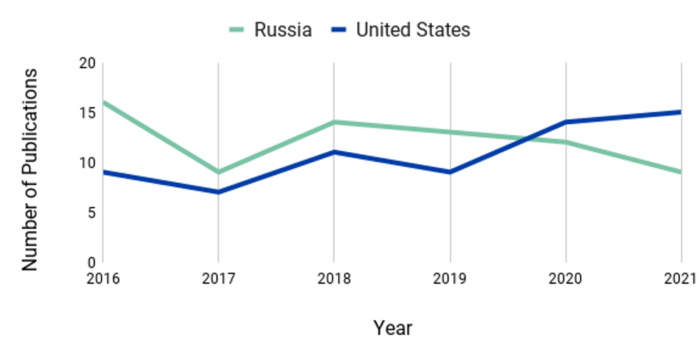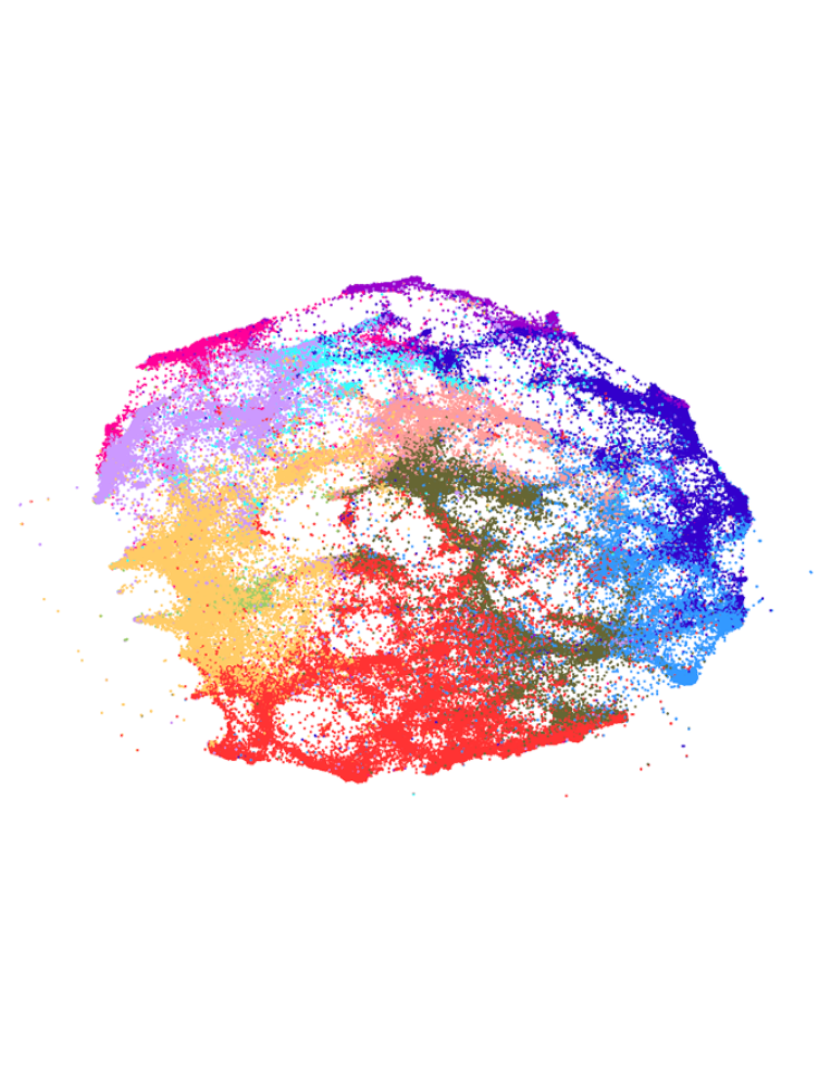Supercomputers engage in high performance computing (HPC), which enables a significantly higher level of computing power than a standard desktop computer, and is used to solve computationally large problems in various domains. Supercomputers increasingly make use of single or reduced precision computing approaches, which lend themselves to machine learning and A.I. applications.
Given the many industries that HPC supports, leadership in supercomputers is considered important for economic, scientific, and national security reasons. As a result, leadership in supercomputing is a priority for many governments. The fastest supercomputer today, measured in floating-point operations per second (FLOPS), is Japan’s Fugaku.1 Of the top 500 supercomputers in the world today, China (173) and the United States (149) are the leading countries.2
Using CSET’s Map of Science, this data snapshot describes observable trends and country-level competitiveness in research related to supercomputers.
We use the field labels from Microsoft Academic Graph (MAG) to identify research clusters (RCs) in the Map of Science that are related to supercomputers; MAG defines supercomputers as “a computer with a high level of performance as compared to a general-purpose computer.”3
Searching for RC with “supercomputer” in the subject filter and at least 50 papers published in the last five years on the User Interface returns 20 RCs: 17 falling under computer science, two falling under social science, and one falling under earth science. The United States leads in 15 of the 20 RCs, with China and Japan leading in two each, and Russia leading in one.
These 20 RCs have varying levels of supercomputer-related research. This snapshot explores the three RCs with the highest likelihood of having publications labeled as “supercomputer” research.
Figure 1. Supercomputer-related RCs in the Map of Science UI

The leading countries in the three RCs are Russia, China, and Japan, respectively. We are particularly interested in comparing the number of publications with U.S. authors to the number of publications with authors from the leading country in that RC.
RC 81302 focuses on workload and behavior analysis of supercomputer systems. With 170 publications from 2016 to 2021, Russia leads this RC in number of publications. We compare the number of publications with Russian authors to the number of publications with U.S. authors in Figure 1. We see that while Russia is leading with 73 publications in total, the United States surpasses Russia in 2020, and is close behind in the overall tally with 65 publications. Russian leadership in this RC is somewhat surprising given that Russia is home only to seven of the top 500 supercomputers today.
Figure 2. Number of publications by year: Russia and the United States

RC 56882 contains research on the Sunway TaihuLight, a Chinese supercomputer, which as of November 2021 is ranked fourth in the top 500 supercomputers. With 317 publications from 2016 to 2021, China leads this RC in number of publications. Figure 2 compares the number of publications with Chinese authors versus the number with U.S. authors. China leads with 244 publications in total, and the United States is in second place with 54 publications in total.
Figure 3. Number of publications by year: China and the United States

RC 78373 contains research publications on vector processors and extreme weather forecasting, with many papers focusing on the SX-aurora TSUBASA vector processor. With 76 publications from 2016 to 2021, Japan leads this RC in number of publications. Figure 3 shows that Japan leads with 52 publications, while the U.S. only published in four of the six years, with 10 publications total.
Figure 4. Number of publications by year: Japan and the United States

This snapshot, which explores the contributions of countries in RCs with a relatively high amount of super-computer-related research, is the last in our series showcasing how to explore the Map of Science to identify research of interest. The Map of Science will continue to be available here and will be updated regularly. Keep an eye out for future CSET data and issue briefs that dive deeper into the Map. Also, stay tuned for our next Data Snapshot series—starting in February 2022—where we will explore analysis using CSET’s Private-sector AI-Related Activity Tracker.
